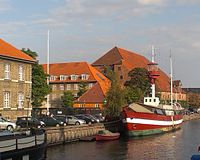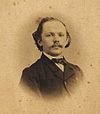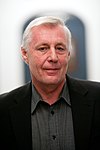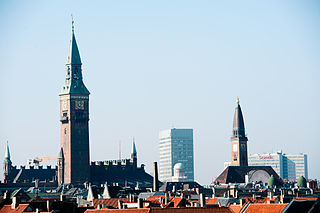
The economy of Denmark is a modern market economy with comfortable living standards, a high level of government services and transfers, and a high dependence on foreign trade. The economy is dominated by the service sector with 80% of all jobs, whereas about 11% of all employees work in manufacturing and 2% in agriculture. Nominal gross national income per capita was the tenth-highest in the world at $55,220 in 2017. Correcting for purchasing power, per capita income was Int$52,390 or 16th-highest globally. Income distribution is relatively equal, but inequality has increased somewhat during the last decades, however, due to both a larger spread in gross incomes and various economic policy measures. In 2017 Denmark had the seventh-lowest Gini coefficient of the 28 European Union countries. With 5,789,957 inhabitants, Denmark has the 39th largest national economy in the world measured by nominal gross domestic product (GDP) and 60th largest in the world measured by purchasing power parity (PPP).
The Technical University of Denmark, often simply referred to as DTU, is a university in Kongens Lyngby, just north of Copenhagen, Denmark. It was founded in 1829 at the initiative of Hans Christian Ørsted as Denmark's first polytechnic, and is today ranked among Europe's leading engineering institutions.

DSB, an abbreviation of Danske Statsbaner, is the largest Danish train operating company, and the largest in Scandinavia. While DSB is responsible for passenger train operation on most of the Danish railways, goods transport and railway maintenance are outside its scope. DSB runs a commuter rail system, called the S-train, in the area around the Danish capital, Copenhagen, that connects the different areas and suburbs in the greater metropolitan area. DSB used to operate some trains in Sweden, but has since August 2017 lost all their contracts.
.dk is the country code top-level domain (ccTLD) for Denmark. The supervision of the .dk top-level domain is handled exclusively by DK Hostmaster. Any new .dk domain name has to be applied for via an approved registrar. Then the domain name applicant can ask the registrar to manage his domain name or have it managed directly by the DK Hostmaster. Registrations of domain names with the characters æ, ø, å, ö, ä, ü, and é are also allowed.

Connie Hedegaard Koksbang is a Danish politician and public intellectual. She was European Commissioner for Climate Action in the European Commission from 10 February 2010 through 31 October 2014.

The five Regions of Denmark were created as administrative entities at a level above the municipalities and below the central government in the public sector as part of the 2007 Danish Municipal Reform, when the 13 counties (amter) were abolished. At the same time, the number of municipalities (kommuner) was cut from 270 to 98.

Banedanmark is a Danish company responsible for maintenance and traffic control of most of the Danish railway network. Branched off from DSB as a government agency in 1997. From 2004 to 2010 Banedanmark was a state-owned company under the Danish Ministry of Transport. In 2010 Banedanmark once again became a government agency under the Danish Ministry of Transport.

The Danish Meteorological Institute is the official Danish meteorological institute, administrated by the Ministry of Energy, Utilities and Climate. The institute makes weather forecasts and observations for Denmark, Greenland, and the Faroe Islands.
CFL Cargo Danmark (CFLCD) is a private freight railway company in Denmark and a subsidiary of Luxembourg's CFL Cargo, owned by the national railway company of Luxembourg, Société Nationale des Chemins de Fer Luxembourgeois (CFL) and ArcelorMittal.
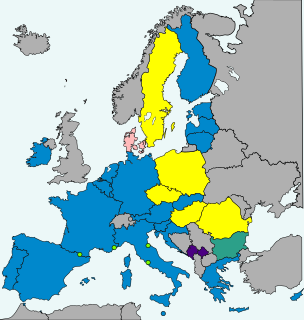
Denmark uses the krone as its currency and does not use the euro, having negotiated the right to opt-out from participation under the Maastricht Treaty of 1992. In 2000, the government held a referendum on introducing the euro, which was defeated with 46.8% voting yes and 53.2% voting no. The Danish krone is part of the ERM II mechanism, so its exchange rate is tied to within 2.25% of the euro.

Denmark has considerable sources of oil and natural gas in the North Sea and ranked as number 32 in the world among net exporters of crude oil in 2008. Denmark expects to be self-sufficient with oil until 2050. However, gas resources are expected to decline, and production may decline below consumption in 2020, making imports necessary. A large but decreasing proportion of electricity is produced from coal, and hydropower and 3-4% nuclear power is imported while wind turbines supply the equivalent of about 42% of electricity demand by 2015.

Denmark was a pioneer in developing commercial wind power during the 1970s, and today a substantial share of the wind turbines around the world are produced by Danish manufacturers such as Vestas and Siemens Wind Power along with many component suppliers. In Denmark's electricity sector wind power produced the equivalent of 43.4% of Denmark's total electricity consumption in 2017, increased from 33% in 2013, and 39% in 2014. In 2012 the Danish government adopted a plan to increase the share of electricity production from wind to 50% by 2020, and to 84% by 2035. Denmark had the 6th best energy security in the world in 2014.
A constitutional and electoral age referendum was held in Denmark on 28 May 1953. Both proposals were approved by voters, leading to both a new constitution taking effect on 5 June, and the electoral age being lowered from 25 to 23 years, also starting on 5 June. Voter turnout was 59.1% for the constitution question and 57.1% for the voting age question.

Jutland Art Academy, is a state recognized institute for higher education in Aarhus, Denmark, offering a 5-year programme in contemporary art. The academy has no departments and focuses on conceptually driven practices and transdisciplinary work. The academy has about 40 students. The school is located in the street of Mejlgade in the Latin Quarter of Aarhus.

The Royal Danish Academy of Fine Arts, School of Design, more commonly known as the Danish Design School is an institution of higher education in Copenhagen, Denmark, offering a five-year design education consisting of a three-year Bachelor programme and a two-year Master in design as well as conducting research within the fields of arts, crafts and design. Danmarks Designskole is an institution under the Ministry of Science, Innovation and Higher Education.
VIA University College is a university college organisation in Central Denmark Region, Denmark, established in January 2008. It is present in the region with a total of eight campuses.
Anders Eldrup is a Danish business leader who for years has been a central figure in Danish politics and business. He was previously Permanent Secretary at the Danish Ministry of Finance, and since 2001 Eldrup has taken the position as CEO. First directing the Danish oil and gas company DONG, then from 2006 CEO of DONG Energy - the result of one of Denmark’s largest mergers in history between DONG and five other Danish energy companies.
The first high-speed railway in Denmark is currently under construction and expected to open in 2019. Further high-speed lines are currently under planning.

Greater Copenhagen Light Rail is a planned electric light rail system in the Greater Copenhagen, Denmark. Its first stage is known as the Ring 3 Light Rail and went under construction in 2018. It will go from Lundtofte Park north of Copenhagen to Ishøj station in the southwest, and it is expected to open in 2025, with an annual ridership of 13-14 million projected. The line will be owned by the Ringby-Letbanesamarbejdet, which is a collaboration between the municipalities serviced or affected by the line.
Christian Albrekt Larsen is a Danish professor employed at Aalborg University, where he is involved in comparative welfare studies. He works on a daily basis at the CENTRE FOR COMPARATIVE WELFARE STUDIES (CCWS).

